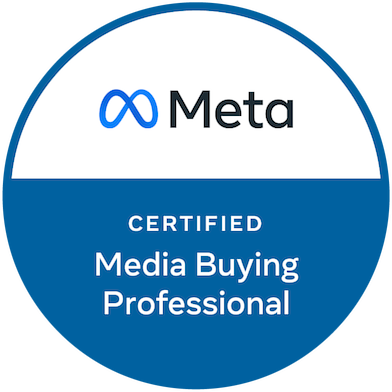What You Need to Know about Favicons
A favicon, short for “favorite icon” is a tiny icon that appears next to a website’s title in a browser. It serves as a visual identifier for the website and helps users quickly find and navigate to it in bookmarks, home screens or tabs on their browsers or mobile devices.
A viewable favicon, especially in organic Google results, can improve a website’s visibility, increase its CTR, and reinforce its brand identity. Additionally, a favicon can make a website appear more professional and trustworthy.
Now, let’s look into the steps to create a favicon and how to add it to your website.
Specifications for the perfect favicon pixel size and file type
The size of a favicon is important to consider because it can impact the quality of the image when it is displayed in organic Google results. Generally, a favicon should be square and can theoretically have sizes of 16×16 pixels, 32×32 pixels, 48×48 pixels, or 64×64 pixels.
It is recommended by Google that you create a favicon that is at least 48×48 pixels in size. This will ensure that the image is of high enough quality to be easily recognizable when it’s displayed in organic Google results. Google also states, that if you want to have bigger sizes for a favicon, they should be a multiple of 48px square, for example: 96×96px, 144×144px and so on.
When creating your favicon, it is also critical to consider the file format. The most common format for a favicon is .ICO, which is a format specifically designed for favicons. .ICO files are small and can easily be used on a variety of different web browsers, making them the ideal choice for a favicon. If you are not a fan of the .ICO format, there are other file types supported by Google.
Additionally, it is important to keep the file size of the favicon as small as possible, as larger file sizes will increase the load time of your website.
Bonus Tip: There are many free online tools, such as Favicon.io, that you can use to create a favicon. Simply upload an image and select the size you want, and the tool will generate a favicon for you.
In conclusion, the pixel size, format, and file size of your favicon are essential factors to consider when optimizing your website for organic Google results. By following these guidelines, you can increase the chances of your favicon appearing prominently in organic Google results and ultimately improve your website’s overall online presence.
Where to put the Favicon on the Web Server?
In order to have your favicon in organic Google results, you must upload it to a location on your web server where it can be easily accessed by web browsers. The most common location for a favicon is in the root directory of your website, which is usually the same directory that contains your index.html or index.php file.
To upload the favicon to your web server, you will need to use an FTP client such as FileZilla or Cyberduck. Once you have connected to your web server using an FTP client, simply upload the favicon file to the root directory of your website.
It is important to note that the name of the favicon file does not have to be “favicon.ico”. This is simply the standard name for a favicon. If you use a different name for your file, Google will be able to show your favicon in organic Google results, as long as you write down the right path into the link tag.
Let’s see how this works.
How to Add a Favicon to Your Website in HTML
To add a favicon to your website, you will need to upload it to your web server and then link to it in the HTML code of your website. Here is a step-by-step guide to help you get started:
- Create a favicon: Follow the guidelines we have already mentioned and keep in mind: The optimal size (according to Google) for a favicon is a multiple of 48px square (for example: 48×48px, 96×96px, 144×144px and so on), and it should be in the .ico or .png format.
- Upload the favicon to your web server: Next, you will need to upload the favicon to your web server. This can typically be done through your website’s file manager or FTP client. The favicon should be placed in the root directory of your website.
- Link to the favicon in the HTML code: Finally, you will need to link to the favicon in the HTML code of your website. You can do this by adding the following code to the head section of your HTML code:
<link rel="icon" href="/path/to/favicon.ico">
Note that the “href”-attribute should contain the URL of the favicon on your web server. If you’ve named your favicon image file something other than “favicon.ico” be sure to update the attribute accordingly.
That is it! Once you have completed these steps, your favicon should be viewable in organic Google results in the next few days.
But what If you are using WordPress? The process for adding a favicon is slightly different.
How to Add a Favicon on WordPress
If you are using WordPress to build your website, adding a favicon to your website is super easy. Here is how to do it:
- Log in to your WordPress dashboard.
- Go to Appearance > Customize.
- Click on Site Identity.
- Upload your favicon using the “Site Icon” section.
- Save your changes.
There you go! With these quick steps, you can easily add a favicon to your WordPress website and get it into organic Google results.
Differences between Favicons in Organic Search Results and Google Ads:
Favicons in organic search results and Google Ads are different in a few ways. First, favicons in organic search results are only shown next to the website’s URL in the search results, while Google Ads display the favicon next to the brand name and Ad’s URL.


Second, the size and format of the favicon are different for organic search results and Google Ads. For organic search results, Google recommends using a 48×48 pixel .ICO or .PNG file, while for Google Ads, the recommended size is 1200×1200 pixels and the file format can be either .PNG or .JPG.
Lastly, favicons in organic search results are automatically generated by Google from the website’s favicon, while favicons in Google Ads must be uploaded and added to the ad manually.
The Impact of Favicons on Click-Through Rate (CTR):
The use of favicons in organic search results can have a significant impact on click-through rates (CTR). CTR refers to the number of clicks your website receives divided by the number of times your website is displayed in the search results. A higher CTR means that more people are clicking on your website, which can lead to more leads and sales from your website.
Having a consistent favicon across all of your website pages, as well as in organic search results and Google Ads, can help build brand recognition and establish a strong visual identity for your website. This can lead to an increase in trust and credibility.
In conclusion, a favicon is a small but important aspect of your website that can greatly improve its visibility and performance in organic Google results. By following the steps outlined in this article, you can add a favicon to your website and enjoy its benefits.
If you found this article helpful and would like to learn more about online marketing and how to improve your website, we invite you to sign up for our newsletter. It is packed with tips, tricks, and expert advice on how to get the most out of your website and improve your digital marketing strategy.
So what are you waiting for? Sign up for our newsletter today and take your website to the next level!









